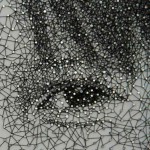A Guest Contribution by Draycat
There are always days when you want to take photographs but you feel that there is nothing to shoot. Here are a few ideas for days like that.
1. Go to the Zoo

a shot from my local zoo
The key here is to get out of your house and go somewhere where there will be something to shoot. This could be a zoo, a park, or even a local market. What you need to do is to decide a place and give yourself an assignment to help you to focus. In a park it could be that you focus on shooting abstract images of swings and slides or try some outdoor macro shots of insects and flowers.
In a local market you could shoot images of the produce as if you were shooting for a local newspaper food section. I recently took a trip to a zoo and set myself the task of photographing the animals so they didn’t look like they were in a zoo. This helped me to consider how best to shoot them. You will also often have a few restrictions to overcome, which can help you to develop your problem-solving skills. For example, when I was shooting the elephants the compound was surrounded by a fence which consisted of thick metal ropes; as a result I had to shoot between the gaps which limited what I could do. As a result I decided to use a long zoom and shoot the elephants a lot more close up, which resulted in some interesting images.
2. Eat a Biscuit

Don’t be afraid to experiment
Food photography can often be a lot of fun and is very easy to do in your house. It’s not even necessary to photograph a whole meal; you can photograph some ingredients, or even something as simple as a biscuit or a strawberry. Don’t be afraid to experiment – play around with lighting, angles, distance and even focal lengths. Here is an example using a strawberry – I started off by shooting it in a traditional way, but then started messing around with my flash.
3. Pick up some Paperclips

be creative and shoot something different
We are used to seeing macro images of insects and flowers, but if you have a macro lens why not try and shoot something else; something as simple as a group of paperclips can make an interesting image, so be creative and don’t be afraid to shoot more unusual or even mundane things.
4. Hit the Streets

Street photography is not just about people
Street photography is a great thing to do if you like to shoot people; it will also help you to build confidence. When I first started shooting street it was a nerve-wracking experience, but after the first couple of times I began to develop more confidence. It also helps you to improve your photographer’s eye as you begin to look for stronger images. I took literally 100′s of pictures of people using their mobile phones when I started because it was easy, but eventually I realised that it doesn’t make for strong images. After that my eye really developed.
5. Go see a Friend

A portrait of a friend
Friends can be a great source of photography practice. Either invite a friend around or go to their house with your camera and shoot their portrait. Friends will generally be supportive, and will also be happy if they can get a nice picture to use on things like social media. I always used it as a chance to catch up with them and have a beer too. Photographing my friends was basically how I got into portrait photography, and I still do it now to practice new styles or lighting when I need to.
6. Shoot Yourself

If your friend can’t make it then you always have one model that you can rely on – yourself. Self portraits can be fun and interesting. Again don’t be afraid to experiment, it’s good to try something new. Play around with lighting, focal lengths, angles, even locations. Remember as well that a self portrait doesn’t have to be your face; you can focus in on a part of your body, such as your eyes, hands or feet.
7. Grab a Beer

As much fun after the shoot as during it!
Product photography is a good way to develop creativity. Just look around your house and you’ll see lots of products. Choose one and shoot it. Play around especially with different angles and lighting if you can. You could even imagine that you have a brief from a company to shoot for a particular magazine, so that you have to shoot in a style that will appeal to the readers. Shooting beer was always one of my favourites…for obvious reasons!
8. Practice your technical skills
The best photographers know their equipment back to front so that they can react quickly. It also means that they can spend more time thinking about the image itself, rather than considering what exposure they should be shooting at, because the technical side of things has become instinctive. It’s good to practice so that it can work the same way for you. Examples of things that you could do are:
Exposure guessing – try to guess the exposure of a scene without using the camera’s light meter. Put the settings into the camera and take a shot, and then see how close you were. Practice in many different lighting situations.
Get to know the buttons on your camera – close or cover your eyes and try to set particular exposures and change settings. This will help you to be able to make changes quickly in the future when you need to.
Play with focal lengths – shoot the same object at different focal lengths and compare the images. This will help you to know how different lenses capture things differently so that you have a better idea of what focal length to use for each situation.
These are just a few ideas to start you off, but the key thing is to be creative and not just limit yourself to things you’ve done before. Happy shooting!
Draycat is British photographer, teacher and writer currently based in Tokyo, Japan. See more from him at his Website on Twitter on Facebook and on Youtube.
Post originally from: Digital Photography Tips.
Check out our more Photography Tips at Photography Tips for Beginners, Portrait Photography Tips and Wedding Photography Tips.
What to do When there’s Nothing to Shoot

Digital Photography School





















You must be logged in to post a comment.